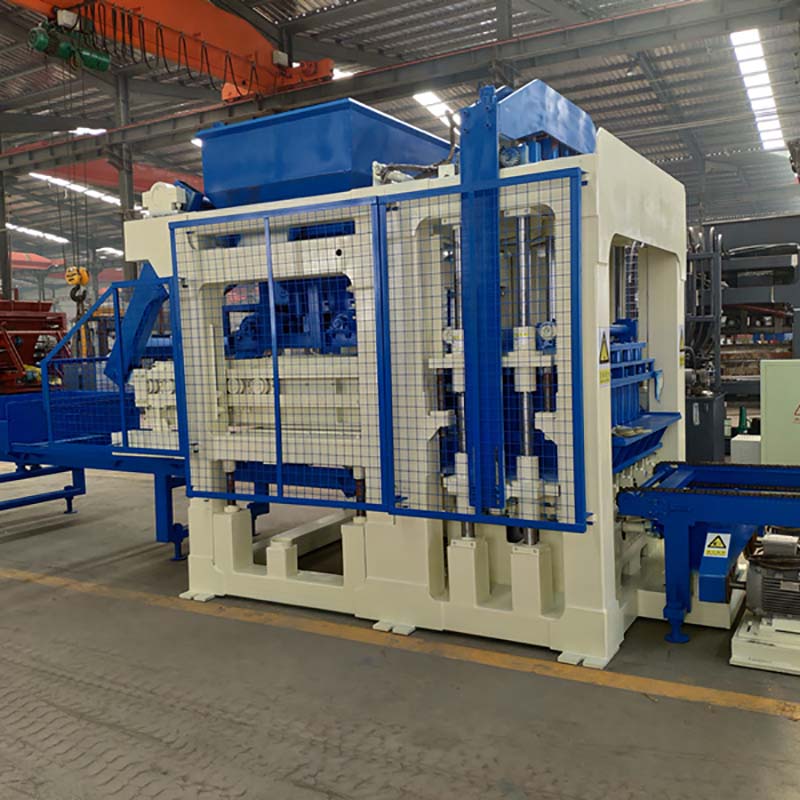
Image source:Aiwei block machine
Introduction
Life cycle analysis (LCA) is a comprehensive tool used to assess the environmental impact of products and processes throughout their entire life cycle. When it comes to brick making machines, understanding their environmental footprint is crucial for promoting sustainable practices within the construction industry. In this article, we will conduct a life cycle analysis of Chinese brick making machines, examining their environmental impacts from raw material extraction to disposal, and exploring potential areas for improvement.
Life Cycle Stages of Chinese Brick Making Machines
Raw Material Extraction and Manufacturing
The life cycle of Chinese brick making machines begins with the extraction and processing of raw materials required for their construction. These materials may include steel, aluminum, plastics, and electronic components. Mining activities and material processing can have significant environmental consequences, such as habitat destruction, water pollution, and carbon emissions. It is important for manufacturers to prioritize sustainable sourcing practices, minimizing the ecological impact associated with raw material extraction.
Chinese manufacturers can further reduce the environmental footprint by adopting recycling and waste reduction measures during the manufacturing process. This includes implementing efficient production techniques, optimizing material usage, and recycling or responsibly disposing of manufacturing waste and byproducts.
Transportation and Distribution
Once the machines are manufactured, they need to be transported to their destination. The transportation phase contributes to greenhouse gas emissions and energy consumption. Chinese manufacturers can minimize these impacts by optimizing their logistics, utilizing energy-efficient transportation methods, and exploring opportunities for local production to reduce the distance traveled.
Efficient packaging practices and the use of eco-friendly packaging materials also play a crucial role in reducing the environmental impact during transportation and distribution. Manufacturers should aim to minimize packaging waste and choose materials that are recyclable or made from renewable resources.
Machine Operation
During the operational phase, the energy consumption and emissions of the brick making machines come into play. Chinese manufacturers have made significant advancements in improving the energy efficiency of brick making machines, as discussed in the previous article. These advancements include hybrid power systems, intelligent control systems, and waste heat recovery. By adopting these technologies, manufacturers can reduce energy consumption, lower emissions, and enhance overall operational efficiency.
Furthermore, the choice of energy sources for powering the machines also impacts their environmental performance. Shifting to renewable energy sources, such as solar or wind power, can significantly reduce the carbon footprint associated with the operation of brick making machines.
Maintenance and Upgrades
Regular maintenance and timely upgrades are essential for the efficient and prolonged operation of brick making machines. Chinese manufacturers should promote proper maintenance practices, ensuring that machines operate optimally and consume energy efficiently. Additionally, offering upgrade options to existing machines can extend their lifespan and minimize the need for new machine production, thereby reducing the environmental impact associated with the manufacturing process.
End-of-Life Disposal
The final stage of the life cycle analysis involves the disposal of brick making machines at the end of their useful life. Proper disposal and recycling of machine components are crucial to avoid environmental pollution and resource wastage. Chinese manufacturers should encourage the recycling and responsible disposal of machine parts, promoting circular economy principles. This includes designing machines with disassembly and recycling in mind, using recyclable materials, and establishing take-back programs for old machines.
Key Environmental Impacts and Opportunities for Improvement
Energy Consumption and Emissions
Energy consumption and associated greenhouse gas emissions throughout the life cycle of brick making machines are significant environmental concerns. Chinese manufacturers have made notable progress in improving energy efficiency through innovative technologies and renewable energy integration. Continued research and development efforts should focus on further reducing energy consumption and emissions, optimizing machine design and operation.
Raw Material Extraction and Processing
The extraction and processing of raw materials for brick making machines contribute to environmental degradation. Chinese manufacturers should prioritize sustainable sourcing practices, considering the environmental and social impacts of mining and material extraction. This includes promoting responsible mining practices, using recycled or responsibly sourced materials, and exploring alternative materials with lower environmental footprints.
Packaging and Transportation
Packaging and transportation have environmental implications in terms of waste generation and emissions. Chinese manufacturers should aim to minimize packaging waste and utilize eco-friendly materials. Additionally, optimizing logistics and exploring local production options can reduce the distance traveled and associated energy consumption.
End-of-Life Disposal and Recycling
Proper disposal and recycling of brick making machines are critical to avoid environmental pollution and resource wastage. Chinese manufacturers should prioritize the design of machines that facilitate disassembly and recycling. Establishing take-back programs and promoting the recycling of machine components can minimize the environmental impact of end-of-life disposal.
Conclusion
Life cycle analysis provides a comprehensive understanding of the environmental impact of Chinese brick making machines from raw material extraction to disposal. Chinese manufacturers have made significant strides in improving energy efficiency, reducing emissions, and adopting sustainable practices. However, there is still room for improvement, particularly in sustainable sourcing, transportation, and end-of-life disposal. By incorporating eco-friendly materials, optimizing logistics, and promoting recycling, Chinese manufacturers can further enhance the environmental performance of brick making machines, contributing to a more sustainable construction industry.
